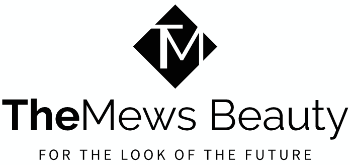In the dynamic world of product innovation, design thinking has emerged as a transformative approach that places human experiences at the heart of product development. At 42T, design thinking is more than just a buzzword; it’s a structured, iterative process that guides teams from ideation through to execution, ensuring products not only meet market needs but also exceed user expectations. This methodology is crucial in creating solutions that are not only innovative and technically viable but also commercially successful.
Table of Contents
Understanding Design Thinking
Design thinking is a user-centric approach that encourages businesses to focus on the people they’re creating products for, which leads to better products, services, and internal processes. When you sit down to create a solution for a business need, the first question should always be: what’s the human need behind it?
At its core, design thinking involves five key phases: empathise, define, ideate, prototype, and test. However, unlike traditional project processes, these stages are not always sequential. They can be parallel and iterative, which allows designers to remain highly flexible and make adjustments based on user feedback as they iterate on their products.
- Empathise: It all starts with empathy, understanding the human needs involved. By observing and engaging with users, 42T’s designers gather insights, which help to inform the problem-solving process.
- Define: The insights gathered during the empathy phase inform the definition phase. Here, designers at 42T articulate the user’s needs and problems into a human-centered problem statement.
- Ideate: With a solid background understanding of user needs and challenges, 42T’s team brainstorm a range of creative solutions. This stage leverages divergent thinking, generating a multitude of possible solutions to explore.
- Prototype: The team then develops prototypes, which are scaled-down versions of the product or specific features found within the product. Prototyping is crucial as it enables the team to explore potential solutions and begin bringing ideas to life.
- Test: Finally, the prototypes are rigorously tested. This testing phase is iterative, with results often leading back to redefining problems and revisiting the ideation or prototyping phases. It ensures that the final products are both functional and user-friendly.
Benefits of Design Thinking
Employing design thinking offers numerous advantages. It fosters creativity and innovation, crucial for solving complex problems in new, interesting ways. Moreover, by involving the user in the process, the risk of disconnect between the product and its market fit significantly reduces.
One of the greatest strengths of design thinking is its adaptability. It can be applied to virtually any field or industry, from healthcare to retail, technology to education. For 42T, this means delivering products that are not only fit for purpose but perfectly tailored to enhance user satisfaction and drive commercial success.
Real-World Applications
At 42T, design thinking has been instrumental in the development of multiple successful products. For example, a recent project involved developing a medical device that aids in-patient rehabilitation. Through an iterative process of design thinking, the product was developed to be highly intuitive for both patients and healthcare providers, significantly improving user satisfaction and patient outcomes.
Moreover, the approach has streamlined the product development process, reduced time-to-market and enabling quicker iteration cycles. This rapid prototyping and testing phase mean that 42T can refine products continually until they meet the exact needs of their users.
Conclusion
In today’s fast-paced, technology-driven world, design thinking helps companies like 42T stay ahead of the curve by innovatively solving problems. It’s a human-first approach that enhances the creative process and leads to more effective solutions. By deeply understanding and empathising with users, 42T is able to develop products that truly resonate and succeed in the marketplace.
To learn more about how 42T integrates design thinking in product development and to see some of the cutting-edge products developed using this approach, visit 42T’s product development page.




